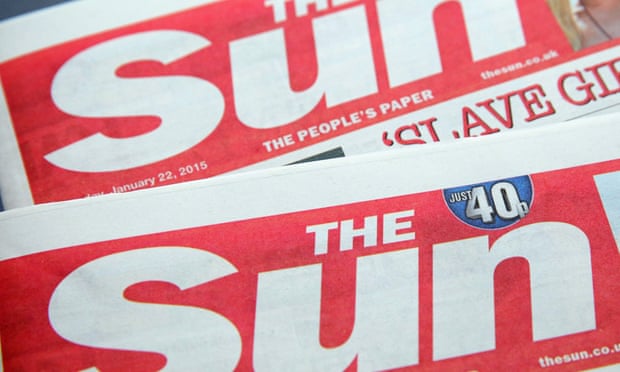Case study research tasks
The basics
Your chosen industry:
Music
Your chosen case study (i.e. text/institution etc.):
Spotify
Have you received approval for this case study from your teacher?
Yes
Audience
1) How has new and digital media changed the audience experience in your chosen industry?
Instead of buying CD's to listen to music, new and digital media has made it possible for people to download music on-line, illegally and legally. There is also the possibility of listening to music on YouTube, Spotify and Tidal. Also, artists are now going on tour so that means the audience get to experience live concerts from their favourite artists.
2) Has new and digital media changed the way the audience consume your chosen product?
The audience has now turned to downloading music instead of buying CD's in order to consume music.
3) Has the size of the audience changed as a result of new and digital media?
Due to illegally downloading music, more people find it easy to listen to music which has increased the size of the audience who listen to music. CD's can cost up to £10 or more and not everyone can afford to buy CD's from every one of their favourite artists. Therefore, they take advantage of the possibilities that new and digital media offer and download music.
4) What are the positive changes new and digital media have brought to the audience of your case study? (E.g. greater choice, easier access etc.)
We can now listen to music without carrying a CD player along with different varieties of CD's and we no longer have to constantly change CD's if we want to listen to another artists. We now can listen to music on our phones and have a vast amount of choice to listen to from one device. We can also listen to music whenever, whether and on the go. Downloading music and platforms such as Spotify has helped to provide the audience with these benefits.
5) What are the negative changes new and digital media have had on your chosen audience? (E.g. quality of product etc.)
There are issues with illegally downloading, file sharing and the fact that artists are losing money because of this. Since artists are loosing money, staff are at risk of losing their job because the artist can no longer afford to keep them.
6) What about audience pleasures - have these changed as a result of new and digital media?
The audience now take pleasure in using concerts from their favourite artists as a means for diversion. Live concerts and tours is now a necessity for artists in order to keep their career going and this has changed the audience pleasures. Also, social media has become a big part to an artist career because it is one of the key ways they can advertise their new album but also keep a personal relationship with their fans
7) What is the target audience for your chosen case study? Write a demographic/psychographic profile.
My target audience covers a large range of people. It can be both female and male from the ages 12-35.
Institution
1) How has new and digital media had an impact on ownership or control in your chosen industry?
Artists have taken ownership of key industry processes such as marketing and distribution, processes usually carried out by the record labels themselves.
2) What impact has new and digital media had on ownership in your chosen case study?
Swift’s decided to remove her entire back catalogue from music streaming site Spotify because of the fact that artists receive between just $0.006 and $0.0084 per song play. Swift is not the first artist to withdraw music from Spotify. Radiohead’s Thom Yorke called for a boycott of the service over unfair payment practices, removing all his solo projects from the site and describing it as “the last desperate fart of a dying corpse”. The Beatles, AC/DC and The Black Keys are also not available to stream on Spotify.
3) How has new and digital media changed the way institutions produce texts?
New and digital media has now provided artists and individuals the opportunity to launch independent record labels known as Net Labels. Independent music is flourishing in the digital age, with the democratisation of production and distribution brought about by the internet. Independent radio has also found its home on-line, helping guide and shape the non-mainstream audience towards ever changing, ever weirder musical styles. In many cases artists are able to promote and distribute their music digitally without the assistance of a record label. Unsigned artists can sell their music on iTunes, have it streamed on Spotify or Soundcloud and produce their own videos for YouTube.
4) How has new and digital media changed the way institutions distribute their product?
Before music could be distributed through the following ways. Radio (and music television) would construct play-lists and radio shows would be broadcast live. Music video could only be seen when broadcast or if purchased on video/DVD collections. Music could only be bought as ‘hard copy’, the most successful being vinyl records, cassettes and then CDs. The music press was published in print and employed professional journalists.
Now, new and digital media has changed the way institutions distribute music.
Spotify offers a vast library of music that is available at any time. Music videos are available anytime on YouTube and can be downloaded and played on mobile devices. Digital radio can be listened to on computers and mobile devices. Music is available as electronic data files. Bloggers can set up their own versions of the music press offering reviews and commentary.
5) How might new and digital media threaten your chosen industry?
The growth and popularity of the internet has challenged the power of conglomerate control within the industry in a number of ways.The digital revolution has enabled audiences to move from passive to active, leading to a participatory culture as audiences get more of a say in what music is produced and which music succeeds. The increase in internet file sharing has paved the way for the audience to receive free music and causing artist, as well as the music industry, to lose money and try and find new ways to make money.
6) How has new and digital media changed the way your chosen industry is regulated?
The music industry wants to protect their position of dominance. Developments in technology and the emergence of the Internet mean that artists have the potential to reach audiences without the need for a major company and where once recording equipment was expensive it was out of reach for the average person; it is now widely available at a low cost. In many cases artists are able to promote and distribute their music digitally without the assistance of a record label.
UGC
1) What examples of user-generated content can you find in your case study?
Bandcamp and Patreon are sites for independent musicians. Bandcamp helps artists sell their own music and pays out $3.5m a month to its network of musicians while with Patreon, fans commit to paying a small amount whenever an artist releases something new: it pays out $2m a month.
2) How has UGC changed things for audiences or institutions in your chosen case study?
Fans can leave video comments, post a video response or spoof and upload music to their own social network profile. These forms of user generated content illustrate the changing relationship between producers and audiences in a move towards a ‘demand led’ music industry where fans themselves have the power to influence what is produced. Audiences can be seen to have more of an impact on production and can even be part of the production process themselves. Some see this as a positive move that reduces the amount of power held by institutions. Audiences have easy access to the means of production. Videos can be made and edited at home and uploaded to YouTube. Music can be produced at home and made available via social networking where it can be sold or offered for free download. Audience generated material is always cheaper than that produced by professionals and so institutions also benefit from the move towards including more user generated content.
Marxism, Pluralism and Hegemony
1) What would be a Marxist perspective of the impact of new and digital media on your chosen case study?
In this illusion of choice consumers are overwhelmingly listening to the ‘hits’. The audience listen to the music that they are shown through streaming services such as YouTube and Spotify and therefore are indirectly being persuaded to what music they should listen to. This can be likened to the hypodermic needle model where media is being fed to the audience by the elite people.
Cultivating an audience on social media does, of course, have its benefits. Artists can hotwire ideas and newly recorded material to fans who give real-time feedback, and others can gradually expose a curated version of themselves that quashes any tabloid rumours. This shows the two step flow theory as the audience will be convinced to believe the values that their favourite artists, the opinion leaders, believe and therefore control their opinions.
2) How would a pluralist view the impact of new and digital media in your chosen industry?
The digital revolution is both challenging the power of the music industry as something that is conglomerate controlled, and transforming the role of the audience by giving them more power over the way they consume and respond to media products. Power is in the hands of an audience as a mass rather than with individual audience members. A media institution produces media texts, has to distribute them to the audience and the method of viewing/reading (exhibition) has to be considered. Audiences can be seen to have more of an impact on production and can even be part of the production process themselves. Some see this as a positive move that reduces the amount of power held by institutions. As conglomerates becomes less dominant, audiences gain more choice over the types of music they want to hear and access, rather than being restricted by the type of music distributed by record labels. The digital revolution has enabled audiences to move from passive to active, leading to a participatory culture as audiences get more of a say in what music is produced and which music succeeds.
3) Are there any examples of hegemony in your chosen industry or case study?
The Internet was meant to weaken the dominance of superstar artists in the music industry and enrich the smaller, niche music creators. But new research suggests that this “long tail” theory is wrong: superstars are capturing the vast majority of music revenues and their share is increasing – not decreasing – because of the rise of digital services like iTunes and Spotify. The top 1 per cent of artists the likes of Rihanna and Adele accounted for 77 per cent of recorded music income in 2013.
Yet it is not just consumers that Tidal has struggled to convince; the service has also garnered criticism from numerous musicians, who claim it only helps the Madonna's and Jay Z's of this world, and smaller bands and emerging artists will not reap any benefits. More seriously, nobody on the day talked about why Tidal would work better for small artists who didn’t have equity in the company, leaving it open to accusations of being just a rich-stars-get-richer club.
It was reported by TechCrunch, however, back in 2009, that the major labels had received an 18% equity share in Spotify, and were receiving more favourable terms than indie labels. In creating its platform, has Spotify simply restored the business model of the pre-digital music industry, where major labels wield all the power and artists get short shrift?
Globalisation
1) How has globalisation impacted on your chosen industry or case study?
People today consume diverse music offered to the global market by multinational media and entertaining industry. For example, on Spotify, you are able to browse music of different genres and cultures.
2) In your opinion, has globalisation had a positive or negative impact on your chosen industry and case study? Why?
Positive because people the increase relationships among culture from music has helped Spotify to become the great music provider to a large amount of audience that it is today. People from different countries can listen to music on Spotify which makes it a world wide music provider, which increases its popularity. Also, people from different ends of the world can create their own music and post on YouTube which adds diversity to the music industry.
3) Can you find examples of cultural imperialism in your case study or industry? (The 'Americanisation' of the world)
If we examine where the most popular types of music comes from, we can see that a vast of consumed music comes from the US or the UK. The authentic, traditional forms of music are being replaced by the mass produced songs from the great branches like Britney Spears and The Spice Girls, which are sold by large firms of the western music industry to people in the world. The process of loss of local music traditions can be seen as a loss of authentic, cultural identity. In many parts of the world, people are trying to preserve the traditional forms of music through the creation of schools and institutions for culture-based education. This people fight against the overwhelming influence of the big global music businesses.
Social media
1) How has your industry or case study used social media to promote its products?
Major recording companies are using on-line distribution of music and social networking sites to reach potential audiences in a new way. By embracing social network media platforms, musicians and record labels are able to utilise an interactive relationship with fans that is beneficial to both producers and audiences. Fans can view videos on YouTube and share clips with other fans by embedding them into blogs, Facebook or Myspace. For Dandelion Radio, being an on-line station means that the listeners are able to connect to the artist heard on the station much more quickly. If you hear a tune you like, you can click a link to the artist’s Last.fm page to find out more, follow links from there to official sites or Bandcampor or Soundcloud pages, make friends on Facebook and follow them on Twitter, and often legally download their whole back catalogue for free to your device before the song is over.
2) Provide examples of how your case study has used social media and explain the impact this would have on audiences.
-
Sites has famously launched careers, including that of Lily Allen. Allen was actually signed to a record label at the time her massive popularity on MySpace broke. However, as the first high-profile artist successfully to promote themselves via the site, she highlighted the importance of the medium. Allen’s story is a good example of how early-adopters can use the free technology available at their fingertips.
- Lady Gaga offers a new business model by successfully combining traditional industry practices (being signed to and financed by a major record label) with new media forms. She utilises the power of a major conglomerate whilst embracing the development of digital technology. She uses social media in order to keep an active relationship between her and her fans.
- Artists such as Selena Gomez, Ariana Grande and Rihanna use social media such as Instagram and Twitter so as to promote their upcoming tours or new album releases.
3) Is social media an opportunity or a threat to your industry and case study?
Social media provides great opportunities to the music industry. As music fans, most of us turn to Twitter or Facebook to keep updated about our favourite bands, whilst new tracks or videos will 99% of the time get their launch on social channels. Furthermore, social media is where music audiences naturally congregate, forming their own communities and sharing their experiences of bands and artists.
Statistics
1) What statistics can you find to illustrate the impact new and digital media has had on your industry or case study? For example, in news, the UK newspaper industry sold more than 12m copies a day in 2001 but in 2014 it was below 7m.
- The music rights organisation PRS for Music reported this year that CD and DVD revenues fell by £8.7 million in 2009, but digital revenues grew by £12.8 million.
- Spotify’s user base has doubled since 2013 but the proportion of users on the paid tier – 25% – looks to have stayed roughly the same.
- Neilsen SoundScan’s global figures reveal that 70% of the music consumed in the first half of 2014 was streamed or downloaded – with streaming up a staggering 52% from the previous year.
- 50 million songs were streamed in January 2015 (double the previous January’s), and that from February 2015
- Overall music industry revenue fell a half percentage point to $3.2bn
- Revenue from paid subscriptions to services like Spotify and Rhapsody grew 25pc to $478m, while revenue from free services like Pandora grew 22pc to $550m
- Download sales revenue fell 4pc to $1.3bn, while physical disc sales dropped 17pc to $748m
- The rise of digital streaming has helped the industry maintain annual revenues of around $7bn since 2010, offsetting the decline in revenue from digital downloads of single tracks that began in 2013
2) Looking at these statistics, what impact has new/digital media had on institutions in your chosen industry?
It seems that new and digital media has decreased the amount of CD's that I brought. Music is now being streamed or downloaded and the percentage of how many people do this is increasing.
3) What has the impact been for audiences? These may be positive and negative.
Positive- CDs can be quite expensive and annoying to carry around in order to listen to music. Also a CD music player would need to be present to listen to the music. However, streaming services such as YouTube and Spotify offer music for free.
Negative- Free streaming services provide free music but this means there are ads that will interrupt the music from time to time which can be annoying for the audience. Downloading music can also be a problem for instance, it can take up a lot of storage when downloaded on your phone.
Theories
1) What media theories can you apply to your chosen industry and case study? Select THREE media theories and explain how they are relevant to your case study. Note: these can be ANY of the theories we have learned over the whole of Year 12 and 13.
Richard Dyer (1985) offers a definition of escapism stating that ‘entertainment offers the image of ‘something better’ to escape into or something we want deeply that our day to day lives don’t provide’.
Two step Flow theory- An audience's favourite artist can influence the audience to follow their values and ideologies.
Hypodermic needle- The music industry injects dominant ideologies onto the audience.
Moral Panic- The media produce inactivity and since most young people are obsessed with music, it brings the panic that students are failing because of music.
Issues/debates
1) What media issues and debates can you apply to your chosen industry and case study? Select THREE media issues/debates and explain how they are relevant to your case study.
- The reality of some of the bigger streaming services is that 75% of their user base are free, which has a horrific impact on the music industry and its ability to invest in talent going forward.
New and digital media has made so that streaming services can try and find ways to stop the audience from illegally downloading music for free on-line. One of these ways is by giving some music out for free.
- The modern music industry was created at a time when it made economic sense to produce a million copies of one vinyl record, and copyright could be successfully enforced. But as the industry went digital, the whole way music was made and sold changed. Digital downloads of songs continued to fall out of favour in the first half of the year, while free and paid music-streaming revenue keep growing.
CD's are no longer popular because people have grown to prefer downloading music on-line or listening to music on streaming services. This doesn't provide artists with a lot of money compared to the amount they were receiving when CD's were popular.
- Streaming services such as Spotify that provide free music to users who are not monthly subscribers are practically giving away music for free and are not only disrespecting the artist who make music for them to sell but also ruining the way the music industry is run. Some artists, most famously Taylor Swift, have been criticising Spotify’s “freemium” approach, which allows people to listen for free to its basic, advertising-supported service.
Spotify, my chosen case study, is being critised for providing free music to users. Spotify claims that in a long term, the free users will turn into paying customers and that they are making enough money to pay artists fairly.
Wider examples and secondary texts
1) What other texts or institutions are also relevant to your case study? What would be good secondary texts or examples to use to support the findings of your independent case study?
Tidal is a music streaming service that originally started in Scandinavia in 2009. It was called WiMP then, launched by technology firm Aspiro and retailer Platekompaniet – Norway’s equivalent of HMV. In October 2014 Aspiro rebranded WiMP as Tidal for its UK and US launch, with its main selling-point being its “lossless” (higher-quality) streams. It also added music videos and deeper editorial, albeit for double the price – £19.99 a month – of rivals such as Spotify, although it has now launched a non-lossless £9.99 version too. The big message from Tidal’s launch was its new owners’ determination to restore the value of music in the eyes (or ears) of listeners, which means making them pay for it, rather than listening for free, as they can on the advertising-supported tiers of rivals Spotify and Deezer.
YouTube is the world’s most popular music streaming service, with a large chunk of its 1 billion monthly viewers watching music videos – especially younger users. It is trying to get people to pay for music too: it’s launching its own Spotify rival, YouTube Music Key, with a similar model of a free, ad-supported tier then a £9.99 monthly subscription with more features. But YouTube is already a free way to listen to almost any song ever recorded. Some in the music industry fear that if Spotify’s free tier is restricted or even shut down, listeners will drift away to YouTube – which pays much less per stream – rather than subscription services.





